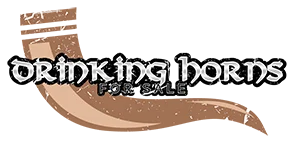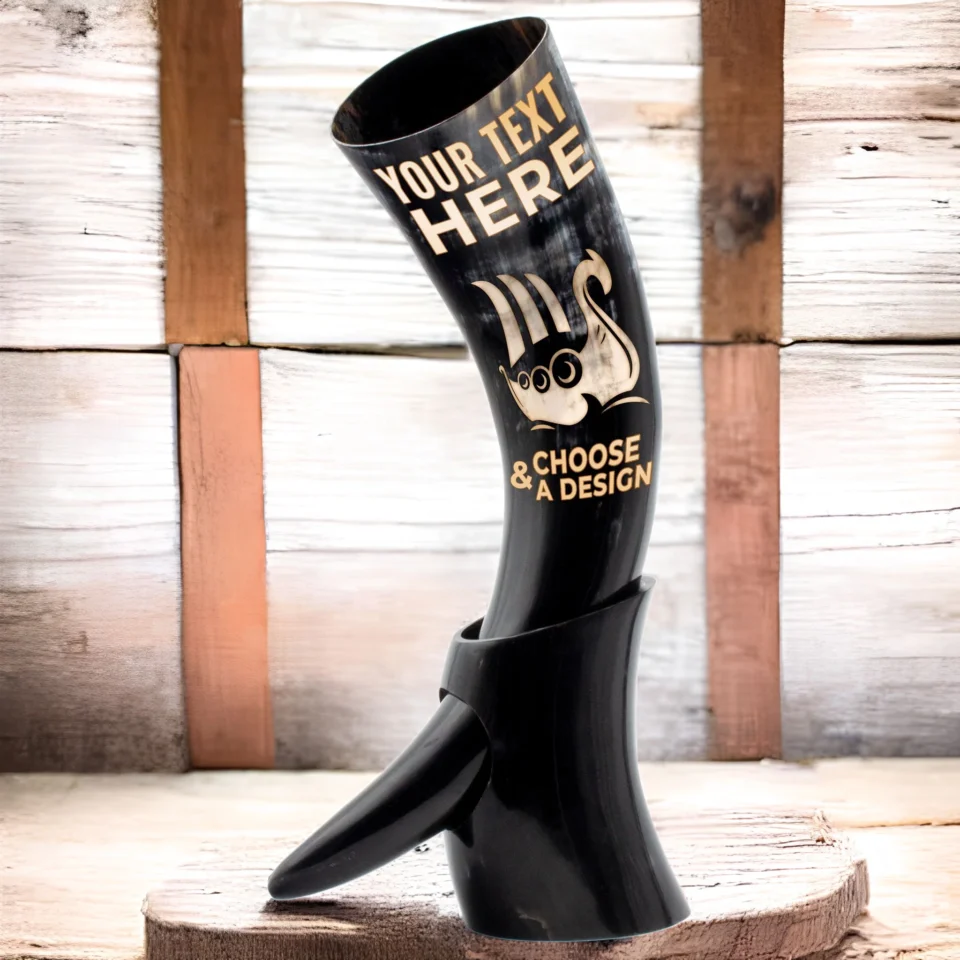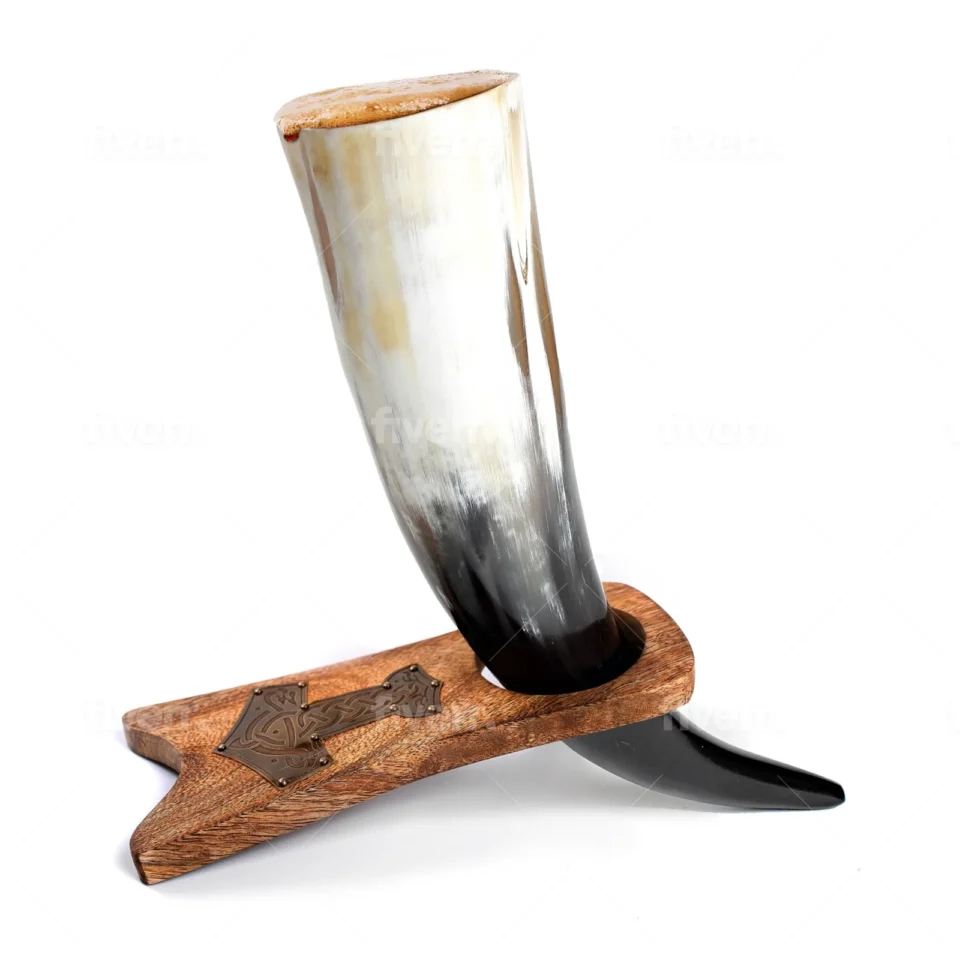Drinking horns have been symbols of heritage and celebration throughout history. Today, they blend tradition with modern utility, making them popular for festivals, reenactments, and daily use.
This guide delves into the safety standards vital for anyone looking to incorporate these historical artifacts into their routine.
Introduction to Drinking Horns
Drinking horns are not just relics of the past; they are living pieces of history that continue to captivate and intrigue.
Originally used by the Vikings and medieval societies, these items have transcended their ancient origins to become modern-day collectibles and functional drinkware.

History and Cultural Significance of Drinking Horns
Tracing back to the Neolithic age, drinking horns have been discovered in burial sites and treasure hoards, indicating their revered status.
Throughout the ages, they have served as ceremonial vessels across various cultures, symbolizing power and community.
Modern Uses of Drinking Horns
In contemporary settings, drinking horns are seen at medieval fairs, historical reenactments, and as specialty drinkware in homes.
Their unique appeal makes them favored gifts and collectibles in cultures celebrating their historical ties.
Understanding Drinking Horn Materials
The construction of a drinking horn significantly influences its safety and longevity. Knowing what your horn is made of is the first step in ensuring it is safe for use.
Types of Materials Used in Making Drinking Horns
Traditional drinking horns are crafted from bovine or buffalo horns, while modern variations might incorporate synthetic materials for durability and ease of maintenance.
Pros and Cons of Different Materials
Natural horns offer authenticity but require rigorous maintenance to prevent degradation. Synthetic alternatives, while less traditional, provide ease of care and uniformity in structure.
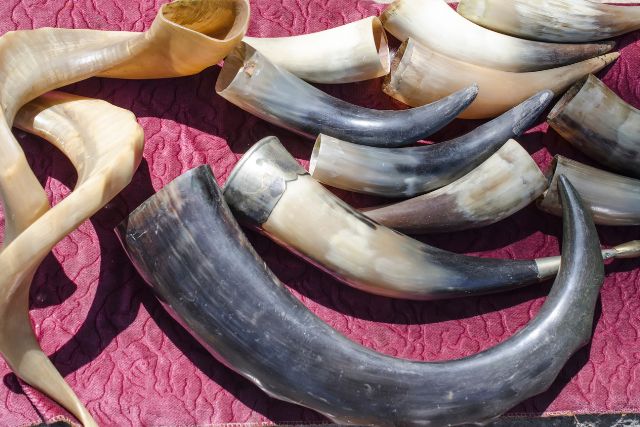
Safety Standards for Drinking Horns
Understanding and adhering to safety standards is crucial for anyone owning or manufacturing drinking horns.
Overview of Existing Safety Regulations
Safety regulations vary by region but generally focus on materials safe for food contact, ensuring that the horns do not leach harmful chemicals.
Chemical Safety and Food Contact Materials
The primary concern with drinking horns is the chemical treatment used during processing. Safe horns are treated with food-grade sealants to prevent leaching.
Importance of Non-Toxic Finishes
A non-toxic finish not only preserves the horn but also ensures that no harmful substances come into contact with the user, a critical factor for safety.
Manufacturing Processes and Their Impact on Safety
The way a drinking horn is made can greatly impact its safety. Traditional methods favored by artisans might use less chemical processing, while mass-produced items might not.
Traditional vs. Modern Manufacturing Techniques
Artisanal creators often use time-honored techniques that can be safer but less consistent. Modern techniques can standardize safety but may rely heavily on chemicals for preservation and aesthetics.
Quality Control in Horn Production
Consistent quality control is essential in manufacturing safe drinking horns. This includes regular testing for toxins and structural integrity.

Maintaining Your Drinking Horn
Proper maintenance extends the life of your drinking horn and keeps it safe for continuous use.
Cleaning and Care Best Practices
Cleaning your horn with mild soap and cool water after each use can prevent the build-up of residues that could compromise safety. Avoid dishwashers as the heat can warp the horn.
Common Issues and How to Avoid Them
Cracking and splitting can occur if a horn is not properly maintained. Regular oiling and storage out of direct sunlight can help avoid these issues.
How to Verify the Safety of Your Drinking Horn
Purchasing your horn from a reputable source is the best way to ensure it meets safety standards.
Recognizing Certifications and Safety Marks
Look for certifications from food safety authorities or trusted trade organizations that validate the safety of the materials used.
Tips for Buying Safe and Authentic Drinking Horns
Research sellers and manufacturers to find those with positive reviews and transparent safety practices. When in doubt, ask for proof of safety testing.
Legal and Ethical Considerations
The legal and ethical sourcing of materials is critical for the sustainability of horn products.

Regulations on Animal Products
In many regions, the use of animal products is strictly regulated to ensure the ethical treatment of animals and the sustainability of resources.
Ethical Sourcing of Horns
Supporting manufacturers who source horns ethically is crucial. Ethical sourcing ensures that animal products are obtained in a way that is not only legal but also humane.
Future Trends in Drinking Horn Safety and Regulation
As interest in sustainable and safe materials grows, so does the innovation in the manufacture and treatment of drinking horns.
Emerging Technologies in Horn Treatment
New technologies are being developed to treat horns more safely and effectively, reducing reliance on harmful chemicals.
Anticipated Changes in Global Safety Standards
As consumer awareness increases, global standards for the safety of drinking horns are expected to become more stringent, promoting better practices industry-wide.
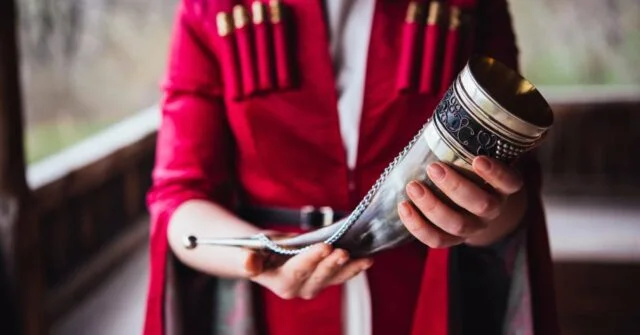
Conclusion
Drinking horns carry a storied past into the present day, blending heritage with contemporary lifestyle.
By understanding and adhering to safety standards, maintaining your horn properly, and choosing ethically sourced products, you can enjoy this ancient tradition worry-free.
